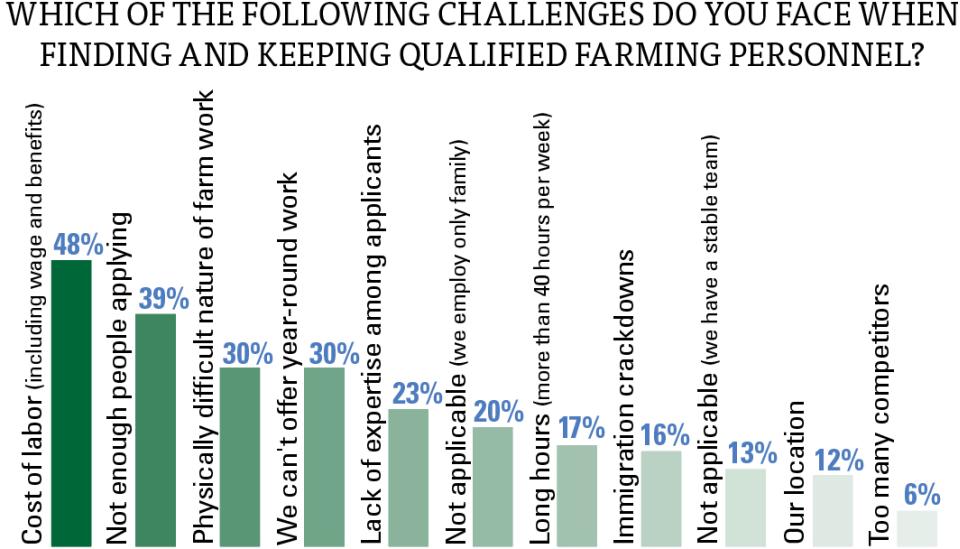Situation Critical for Some Growers With Farm Labor Missing in Action
For one-third of the respondents to American Fruit Grower’s annual State of the Industry survey, labor is not an issue. Not yet at least. Those growers are surrounded by a stable team of employees, which in 20% of those cases is comprised of family members.
For the remaining 67% of the survey respondents, the topic is as turbulent as ever.
“In California we are limited to a 40-hour workweek,” an apple grower from the state says. “They are considering reducing it to four days and raising the minimum wage to $15.50 an hour. There are workers staying home and collecting checks from the government, and I have no idea where all of the people crossing the border are going to. Crazy times.”
According to a citrus grower in Florida, it has become virtually impossible to find excellent farm labor.
“Thirty dollars an hour for basic work is not enough,” a Michigan cherry grower explains.
“People want 20 bucks an hour,” echoes another Michigan stone fruit grower. “How much do you think people will pay for a tomato?”

Perceived lack of stature is a frequent issue.
“Most people think of farm work as the bottom of the work force even if we pay more or the same,” a New Jersey blueberry grower says.
“Nobody wants to work outside anymore,” a Georgia tree fruit grower adds.
The U.S. is not alone in its dilemma, according to a New York state apple grower. “Growers all over the world are having difficulty finding domestic labor,” he says. “Not many people urge their children to set a goal of working on a farm. Most Americans are not physically fit enough to work on a farm.”
One grape grower in Ohio says he turns to his Amish neighbors in times of need. “They are always ready to help,” he says.
“We have good luck hiring high school and college kids,” a Pennsylvania peach grower says, “but there is a lot of turnover from year to year, so we are always looking.”
A blueberry grower in Washington state has some interesting second thoughts on where he could have found help.
“We have a handful of year-round employees, and they bring in extended family during the season,” he says. “Local labor is hard to obtain and maintain. It used to be my children’s friends, but most have aged out. I should [have] had a larger family.”
H-2A Consideration
Only two of 10 survey respondents currently use H-2A, the government program that authorizes the lawful admission into the U.S. of temporary, nonimmigrant workers to perform agricultural labor or services of a temporary or seasonal nature. Those H-2A workers must be paid special rates of pay that vary by locality, must be provided housing and transportation from that housing to the job site if their employment requires them to be away from their residence overnight, and must be guaranteed an offer of employment for a total number of hours equal to at least 75% of the work period specified in the contract.
“[Citizens] do not want to do our kind of work,” a Florida orange grower says. “We use H-2A for our harvesting of citrus.”

“We’ve seen a slight increase in labor this spring, but we’ve been forced to bring H-2A labor up from Mexico to be able to pick our crop for years,” a Washington apple grower says. “Washington state minimum wage is among the highest in the nation, and the AEWR (adverse effect wage rate) is at $17.41 an hour this year, making that the effective minimum. Apple prices have not increased, but costs have risen dramatically. It’s extremely difficult for small farmers to stay in business.”
Among the 81% of survey respondents who do not currently use H-2A, 16% indicate they are considering turning to the program in the next two years. Other growers are not sold on the program.
“There are few American workers who want to work seasonal ag jobs,” a Georgia tree fruit grower says. “Building housing for H-2A workers that are only required for a few months of the year is a difficult expenditure for small growers. There needs to be a pool of workers in place that can be accessed by multiple growers.”










